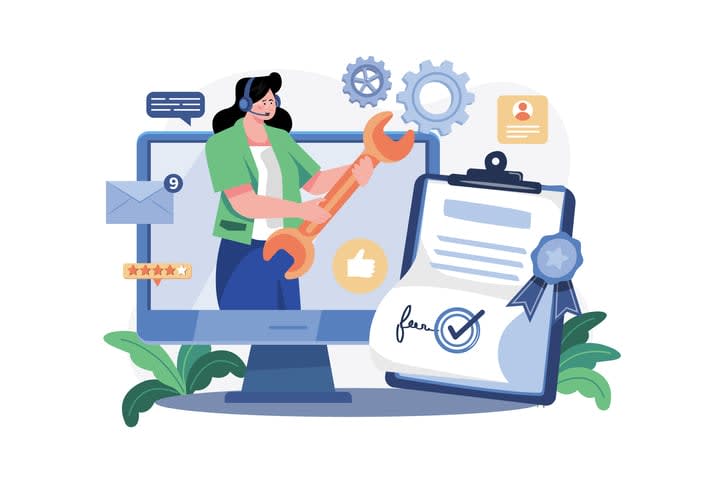In today’s fast-paced business environment, teams often encounter unforeseen circumstances that require immediate attention. Ad hoc meetings, or impromptu gatherings called to address specific issues, have become increasingly important for their ability to facilitate quick decision-making and problem-solving. But how can we ensure that these ad hoc meeting events are effective and optimize our team’s collaboration? In this blog post, we will explore the purposes of ad hoc meetings, strategies for success, the role of technology, and how to overcome common challenges, while showcasing real-life case studies of successful ad hoc meetings in action.
Short Summary
- Ad hoc meetings are essential for addressing urgent issues, making collaborative decisions, and adapting rapidly to changes.
- Strategies such as defining objectives and goals, keeping them focused and short, and selecting the right participants can ensure effective ad hoc meetings.
- Technology provides digital collaboration tools that help teams stay connected and collaborate effectively in ad hoc meetings leading to enhanced team productivity.

Understanding the Purpose of Ad Hoc Meetings
Ad hoc meetings serve specific purposes, such as addressing urgent issues, making collaborative decisions, and adapting to sudden changes. While they might not be as structured as regular meetings, they are crucial for resolving pressing matters in a timely manner, fostering teamwork, and maintaining the agility needed to navigate today’s dynamic business landscape.
Let’s delve deeper into these three key purposes and understand why ad hoc meetings are indispensable.
Urgent Issues and Problem Solving
Imagine a high-value client considering terminating their contract in the near future or the need to find a replacement keynote speaker for your organization’s annual conference within a two-day period. In such situations, ad hoc meetings are ideal for addressing urgent problems that require immediate attention and resolution. By bringing together key team members in a focused, time-sensitive discussion, ad hoc meetings can provide an opportunity for creative problem-solving and fast, informed decisions.
However, it is important to use ad hoc meetings sparingly and only when necessary. Overuse of such meetings can lead to decreased productivity and team morale, as they may lack structure and could potentially disrupt workflows. To strike the right balance, ensure that ad hoc meetings are reserved for truly urgent matters and that they are planned and executed effectively.
Collaborative Decision-Making
When a collective decision needs to be made quickly, ad hoc or unplanned meetings can facilitate the process by bringing together the right stakeholders for a focused discussion. Collaborative decision-making ensures that all parties involved are taken into consideration and that the most suitable solution is achieved. This approach can help construct agreement, encourage team collaboration, and generate a sense of ownership among team members, even in unplanned meetings.
But how can we ensure successful collaborative decision-making in ad hoc meetings? The key lies in following a structured process, which includes:
- Identifying the issue
- Collecting relevant data
- Generating possible solutions
- Assessing the solutions
- Making a choice
- Executing the decision
Following these steps can help avoid poorly organized meetings, including those conducted via Zoom meetings, and ensure a successful outcome, as demonstrated by the Tilt case study, which utilized Kumospace to enable virtual meetings and assist the team in reaching agreements on key decisions.
Adapting to Sudden Changes
Ad hoc meetings can also serve as a platform for teams to quickly adjust to sudden changes, enabling them to come up with ideas and take action in response to unforeseen circumstances. For example, when an emergency or crisis arises that necessitates swift decision-making and strategy development, ad hoc meetings can provide a focused space for rapid ideation and implementation of solutions.
However, adapting to sudden changes can be challenging, as it can bring uncertainty, necessitate rapid decision-making, induce stress, and disrupt routines, including scheduled meetings. To navigate these challenges effectively, it is crucial to have a clear agenda, maintain focus, and ensure that all participants are engaged and actively contributing to the discussion.

Strategies for Effective Ad Hoc Meetings
Now that we understand the purposes of ad hoc meetings, let’s explore some strategies to ensure their success. This includes defining objectives and goals, keeping meetings short and focused, using the right tools, and selecting the right participants.
Implementing these strategies can lead to more effective ad hoc meetings that truly serve their intended purposes and contribute to overall team productivity and collaboration.
Defining Objectives and Goals
Before starting an ad hoc meeting, it is essential to set clear goals and objectives, which helps keep the discussion focused and productive. This may involve:
- Identifying the specific issue or problem to be addressed
- Outlining the desired outcome
- Assigning clear deliverables and responsibilities to each participant
In addition to meeting notes and setting objectives, it is also helpful to create a concise meeting agenda, even if it is just a few bullet points. This ensures that the meeting discussion remains on track and that all pertinent topics are addressed within the designated time frame.
By clearly defining objectives and goals, you can lay the foundation for a productive and efficient ad hoc meeting.
Keeping Meetings Short and Focused
Short and focused meetings maintain participant engagement and prevent unnecessary time wastage. To help achieve this, consider setting a time limit for the purpose of the meeting, with most ad hoc meetings not exceeding 30 minutes. By keeping meetings concise, participants are more likely to stay focused on the task at hand and contribute meaningfully to the discussion.
Another helpful strategy is to use a question-based agenda, which comprises questions rather than discussion points. This approach encourages participants to think critically and engage in problem-solving, leading to more efficient and effective ad hoc meetings.
Selecting the Right Participants
Inviting only relevant team members ensures that the meeting remains efficient and on-topic. To do this, consider employing the two-pizza rule introduced by Jeff Bezos at Amazon, which suggests that every internal team should be small enough to be fed with two pizzas. This approach helps maintain a manageable group size, ensuring that discussions remain focused and decisions can be made quickly.
In addition, be mindful of the roles and responsibilities of each participant, ensuring that they are clear on their tasks and can contribute effectively to the discussion. By selecting the right participants, you can create an environment that fosters efficient problem-solving and decision-making in ad hoc meetings.

Tools and Techniques for Successful Ad Hoc Meetings
Utilizing digital collaboration tools, time management techniques, and follow-up measures can contribute to successful ad hoc meetings. By leveraging technology and implementing best practices, teams can overcome common challenges and enhance overall productivity and collaboration.
Let’s explore some of the tools and techniques that can help facilitate successful ad hoc meetings.
Digital Collaboration Tools like Kumospace
Kumospace offers an innovative platform for remote work, providing a virtual office environment that fosters seamless collaboration. Its real-time interaction capabilities transcend geographical boundaries, enabling teams to communicate, brainstorm, and manage projects as if they were in a physical office.
The platform's user-friendly interface allows for easy file sharing and instant feedback, fostering productivity. Whether you're running ad hoc meetings or long-term projects, Kumospace promotes effective teamwork and enhanced efficiency, contributing to superior business outcomes.
Time Management Techniques
Effective time management techniques help keep meetings on track and prevent them from becoming too long. By setting a time limit for the meeting, participants are more likely to stay focused on the discussion and ensure that all topics are addressed within the designated time frame.
To further optimize time management in ad hoc meetings, consider scheduling shorter calendar time slots, such as 15 or 20 minutes, instead of the default 30-minute intervals. This approach encourages participants to remain on task and prioritize the most important issues at hand, leading to more efficient and effective meetings.
Follow-Up and Accountability Measures
Implementing follow-up and accountability measures ensures that action items on formal agenda are completed and progress is tracked. After the meeting, it is essential to:
- Distribute meeting minutes or notes
- Assign tasks and deadlines
- Establish a system for tracking progress
- Provide feedback and support throughout the process
These steps can help ensure that team members stay on track and complete their tasks efficiently.
Digital collaboration tools, such as Kumospace, can be an effective way to assign tasks, monitor progress, and offer feedback and support. By leveraging technology and implementing follow-up and accountability measures, teams can ensure the success of their ad hoc meetings and drive better results.

Overcoming Common Challenges in Ad Hoc Meetings
Ad hoc meetings can present a variety of challenges, such as disruptions to workflows, lack of structure, and the need to balance flexibility and efficiency. By addressing these challenges and implementing the appropriate strategies, teams can ensure that their ad hoc meetings are productive and contribute to overall team collaboration and success.
Strategies for successful ad hoc meetings include setting clear objectives, establishing ground rules, and assigning tasks.
Minimizing Disruptions to Workflows
Ad hoc meetings can sometimes disrupt workflows and impact productivity, especially if they are called frequently or without adequate notice. To minimize disruptions, consider scheduling ad hoc meetings at appropriate times, giving team members ample notice, and ensuring that the planned meetings are kept short and focused.
Additionally, make sure to use digital collaboration tools like Kumospace, which can help teams stay organized and connected even when working remotely. By minimizing disruptions to workflows, teams can maintain focus on their tasks and ensure that ad hoc meetings contribute positively to productive work sessions and to overall productivity and collaboration.
Maintaining Structure and Organization
While ad hoc meetings may lack the structure of formal meetings, it is still important to maintain a sense of organization to keep the discussion on track and achieve the desired outcomes. This can be achieved by setting clear objectives and goals, creating a concise agenda, and assigning roles and responsibilities to each participant.
In addition, using digital collaboration tools like Kumospace can help maintain structure and organization in ad hoc meetings by providing a platform for real-time communication, file sharing, and collaboration. By maintaining structure and organization, teams can ensure that their ad hoc meetings are productive and effective.
Balancing Flexibility and Efficiency
Balancing flexibility and efficiency in ad hoc meetings is crucial to ensure that teams can adapt to new circumstances and make quick decisions while staying focused on the meeting’s purpose. To strike this balance, consider implementing the strategies discussed earlier, such as defining objectives and goals, keeping meetings short and focused, and selecting the right participants.
Additionally, be prepared to adjust and adapt as needed during the meeting, allowing for changes in direction or new ideas to be explored while still maintaining focus on the intended outcome. By balancing flexibility and efficiency, teams can ensure that their ad hoc meetings are both productive and adaptable.

Case Studies: Successful Ad Hoc Meetings in Action
Real-life case studies can provide valuable insights into the successful implementation of ad hoc meetings in a meeting room, conference room, or virtual meeting or space, showcasing how tools like Kumospace and effective strategies can lead to improved team collaboration and productivity.
Let’s explore two case studies that demonstrate the benefits of ad hoc meetings in action.
Tilt case study using Kumospace (https://www.kumospace.com/customer-stories/tilt-virtual-workspace)
The Tilt case study highlights the benefits of utilizing Kumospace for virtual ad hoc meetings, resulting in enhanced communication and collaboration within the company. By adopting Kumospace as their virtual workspace, Tilt was able to transition to a 100% remote model and double their revenue, eliminating the need for a physical office.
This case study demonstrates the power of digital collaboration tools like Kumospace in facilitating seamless communication and collaboration during ad hoc meetings, ultimately leading to improved team performance and success.
Phonesales case study with switching to Kumospace (https://www.kumospace.com/customer-stories/phonesales.com-virtual-workspace)
The Phonesales case study showcases the positive impact of switching to Kumospace for their virtual workspace, leading to more efficient ad hoc meetings and improved team visibility. By transitioning from Gather to Kumospace, Phonesales was able to enhance their team’s operations, foster more effective collaboration, and boost productivity.
This case study highlights the importance of selecting the right tools and digital collaboration tools for ad hoc meetings, as well as the potential for improved efficiency and success when leveraging technology to support team communication and collaboration.
FAQs
In this section, we will address some common questions about ad hoc meetings, their importance, challenges, and the role of technology in facilitating effective meetings. These FAQs will provide a quick reference for readers seeking additional information and clarification on the topic.
Ad hoc meetings are important for organizations because they allow for quick decision-making and problem solving.
What is an ad hoc meeting?
An ad hoc meeting is an unplanned, impromptu meeting called to address a specific issue or topic. These meetings are often utilized to address urgent issues, make collaborative decisions, and adapt to sudden changes in the business environment. To initiate such a meeting, one can simply call an ad hoc meeting when the need arises.
Ad hoc meetings, also known as one off meetings, can be a great way to quickly address issues and make decisions in a timely manner, especially when they turn into a productive ad hoc meeting. In contrast to recurring meetings, these spontaneous gatherings can offer more flexibility for urgent matters.
Why are ad hoc meetings important?
Ad hoc meetings are important for addressing urgent matters, making collaborative decisions, and adapting to sudden changes. They provide a platform for quick decision-making and problem-solving, which can be crucial for maintaining team agility and responding effectively to unforeseen circumstances.
Ad hoc meetings can help teams stay on top of their tasks and ensure that everyone is on the same page.
How can we ensure effective ad hoc meetings?
Ensuring effective ad hoc meetings involves setting clear objectives, keeping meetings short and focused, and inviting the right participants. Implementing these strategies can help create an environment conducive to more productive work, problem-solving and decision-making. Ultimately, this contributes to overall team collaboration and success.
What challenges might we face in ad hoc meetings?
Challenges in ad hoc meetings may include disruptions to workflows, lack of structure, and balancing flexibility with efficiency. By addressing these challenges and implementing the appropriate strategies, teams can ensure that their ad hoc meetings are productive and contribute positively to overall team collaboration and success.
Organizations should strive to create an environment that encourages collaboration and open communication. This can be done.
What role does technology play in ad hoc meetings?
Technology plays a crucial role in ad hoc meetings by providing digital collaboration tools like Kumospace to facilitate seamless communication and organization. These tools can help teams stay connected, share information, and collaborate effectively, ensuring that ad hoc meetings are both productive and efficient.
By leveraging the power of technology, teams can quickly and easily organize and manage ad hoc meetings.
How can ad hoc meetings enhance team collaboration?
Ad hoc meetings can enhance team collaboration by providing a platform for quick decision-making and problem-solving. By bringing together the right stakeholders and facilitating focused discussions, ad hoc meetings can help teams address pressing issues and make fast and informed decisions. Ultimately, this can contribute to improved collaboration and productivity.
Summary
In conclusion, ad hoc meetings play a crucial role in addressing urgent issues, making collaborative decisions, and adapting to sudden changes. By implementing effective strategies, selecting the right participants, and leveraging digital collaboration tools like Kumospace, teams can ensure that their ad hoc meetings contribute positively to overall productivity and collaboration. As the case studies and best practices discussed in this blog post demonstrate, successful ad hoc meetings can have a significant impact on team performance and organizational success. So, the next time you face an urgent matter or need to make a quick decision, embrace the power of ad hoc meetings and watch your team’s collaboration and productivity soar.
Frequently Asked Questions
Ad hoc meetings are a great way to instantly come together for impromptu meetings and conversations within Microsoft Teams. By simply clicking the “Meet Now” button, you can start an immediate meeting with the relevant people involved.
This is especially useful if it becomes apparent that a real-time discussion needs to take place rather than exchanging messages back and forth.
Ad hoc meetings are an efficient way of handling urgent topics that require immediate support and timely decisions.
Ad hoc meetings typically include those who have an important stake in the matter being discussed. This could be managers, team members, and individuals who will need to take action or provide feedback in order for the project to move forward successfully.
Thus, attendance at an ad hoc meeting is essential for the project’s success.
An ad hoc meeting is a gathering convened to discuss or plan something out of the ordinary. Examples of when an ad hoc meeting might be necessary include when the company needs to make an important decision or take urgent action quickly, such as handling a crisis situation or addressing an unexpected change in company policy.
Ad hoc meetings are an essential tool for enabling quick, effective decision-making in times of emergency or unexpected events. They can provide an opportunity to address urgent issues, ensure collective buy-in on decisions, and allow teams to rapidly adapt to changes as needed.





